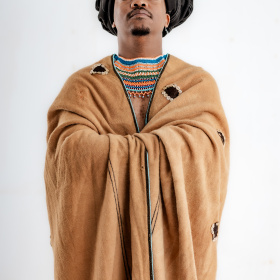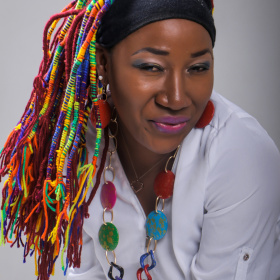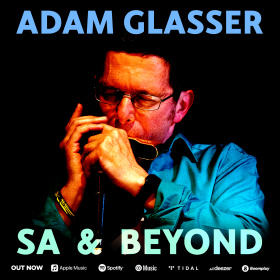Akorino music in Kenya
By Hilary Gitau Muthuma
The fervor and exuberance of Akorino music is captivating. Such is the intensity of feeling in their singing, drumming and foot stomping that they are often considered the ultimate showcase of the African spirit in song and dance. Even more captivating is the “high” that appears to grip them, raising their spirit and the tempo of music to heights that can be dazzling to onlookers. There is a mystic factor to their songs and one feels filled with a supernatural element in the course of their performance; it is so spellbinding. This paper delves into the history of this indigenous Kenyan religion and sheds light on its key pillars and the various rules and mores that guide their captivating spiritual music and the members’ unique lifestyle.
 An_Akorino_dance
An_Akorino_dance Annie_Arthur_performing
Annie_Arthur_performing
The history of their recorded music began in 1972 when Milka Wairimu and Esther Wambui did their first recording with the Ofafa 1 choir. It was well received mostly within the sect and a new genre of gospel music was born. Some of their hits were Musa Erirwo Akahure,Guku Turi Muhuro Wa Riua, Kaa Nami,Jina Lake Yesu, Jonah Nia Tumirwo,Nitumuririkanage Muhonokia, Hindi Iria Ngumo Njega, Matuku No Maroka, Mwathani Wakwa, Hingurai Ngoro Cianyu,in 1973. Thina ni Waikurukire, Andu A Mwathani Tegai, Tha Cia Mwathani Irumukurukira, Ndiguka Arata Akwa, Ndurume Yarehiirwo Ni Jesu, Kiheoni Muoyo, recorded in 1975 under the AIT Rainbow record label. In 1976 they recorded Jacob Ngombo Ya Ngai, Ino Ni Njira Nene, and in 1978 they released Herode, Mateso Ya Kristo, Ngai Cuthiriria and Matuku Maya.
At the time, most recordings were done live and studios were used to an entire group performing together but the Akorino were a completely new experience. The success of this maiden project paved the way for more recordings by different artistes including Julia Lucy who is so far the enduring symbol of success in this realm. She opened a production house and music shop along Duruma road in Nairobi which became a meeting point for members of the sect and their gateway to the recording business.
Traditionally, Akorino shun publicity and it is difficult to get them to talk about their work and this may have perpetuated the misconceptions about their faith and their music. Their singing is spontaneous and their songs and the harmonies have very little influence from other genres of music except for the emerging younger generation of Akorino musicians.
The character of Akorino music is based on their spiritualism which might sound unusual but not to the sect members. According to Julia Lucy the real Akorino compositions are revealed to the artistes by the Holy Spirit and this comes in the form of a dream. She avers that this is the purest kind of music because it is revealed in its holistic nature with the lyrics and harmonies all delivered to the chosen one.
This sourcing is delivered from their belief that music was originally straight from God and the artiste was simply a messenger. “Our songs are a form of prayer and are most effective when it is derived from the dream’’ says Lucy. She also explains that the other type of songs are based on scripture reading or from sermons and have a more secular format in their composition but are still directly derived from the word of God. The drum is not a conventional rhythm or percussion tool but has the objective of lifting the spirit of the musicians to hallucination levels so that they are able to communicate to God.
There is a co relation of Akorino music to the traditional chants by Kikuyu elders of old in their religious sacrifices. The Akorino base most of their beliefs on the Old Testament and blend them with Kikuyu traditions which is reflected in their music. They have their own unique music which has its roots in traditions of Kikuyu traditional religion.
However, younger Akorino artistes are evolving and adapting to use of keyboards and pop music influences. Their style of composition is different and is taking on a modern pop format that does not necessarily rely on dreams or scripture readings for their compositions. This is reflected in the music of younger artistes such as Hezeh Ndung'u and Allan Aaron who draw appeal outside the sect with a dose of hip hop and pop structure to their music. However, even with the modern musicians, there is still a certain character of their music that has been retained especially in the vocal style which creates a distinction from other forms of Kenyan music.
The Akorino also have a Peace Museum at Thika town, began in 2000 with the aim of preserving and strengthening peace values among the Akorino. It started by documenting the history of the Akorino, collecting peace material culture, photos of Akorino leaders who have been an inspiration to others on pacifism, and their biographies. The museum also identified a number of material culture items that are still held by the community because they are perceived as sacred and are exclusively worn during ceremonies. At the same time, some of the material in the exhibition (e.g. gaarus which is a multi-purpose hall constructed on every church campus) exist in Akorino indigenous churches and the best way to exhibit them is by visiting the churches themselves and sharing experiences with the elders who advise that material cultures should not be moved from the community.
Stories are told about exhibits at the museum, because oral tradition goes hand in hand with the visual display. One such story is that of the gacuka, an adornment worn by married women. According to an unpublished document entitled Rugano Rwa Githomo Kia Aroti, 'The Story of the Aroti Church' (Aroti is another name for Akorino), some Akorino prophets heard the voice of God asking them to go for a prayer retreat in Mount Kenya, a sacred mountain for the Agikuyu, in 1927. Among them was a respected prophetess who displayed a unique spiritual charisma and was therefore accepted into the leadership of the early Akorino. On their way up the mountain, as they approached River Nyamindi, tradition says that God spoke to the prophetess about traditional adornments which they had on their bodies. God impressed on her that for a servant of God, the acceptable adornment was that of the inner person, and excessive jewellery was an indication of worldliness. The prophetess told the group that God had instructed them to discard all their jewellery into the River Nyamindi, which they promptly did. They had to leave all worldliness behind before they crossed River Nyamindi on their ascent to the Holy Mountain to hear the voice of God. The removal of their cultural ornaments and adornments represented a turning away from their earlier traditional life in order to cross over into a new life in the Spirit. Following that instruction, personal ornaments, such as necklaces, rings, bracelets, jewellery and other adornments of precious metal were forbidden among the Akorino. Only recently have some Akorino begun to use wedding bands.
Other artefacts on display are the religious vestments that are used by all Akorino during services. One of the vestments is a white turban that is used to identify Akorino as peace makers. The turban is a band of cloth wrapped around the head several times into a neat headdress. Women wear white headscarfs and white ankle-length dresses. This unique dress code identifies all the Akorino people as peace makers. Another vestment is the robe called kanju, from Kiswahili kanzu, which is used during church services. These vestments reflect the Aaronic priesthood which required every minister at the altar to wear priestly garments. By wearing priestly garments, all Akorino, both male and female, affirm that they are called to pray for peace for the country. The Akorino regard Mukurwe wa Nyagathanga the birth place of the Kikuyu nation and Mt. Kenya as their holy shrines. The Akorino are led by elders.
The museum has photographs of Gaaru, and stories are told about the origin of Gaaru. The idea of a gaaru is traditionally Ameru in origin, where young warriors lived together in large buildings called gaaru. There they underwent rigorous training on military methods and social responsibility. The gaaru itself was an extended hut where warriors ate their meals and slept. Within the gaaru was a kitchen space and storage facilities for their belongings. The Akorino adopted the gaaru barrack as a church facility to be used for various activities. It proved to be a great innovation, especially because it allows church members to meet in an informal manner and learn from each other. Gaarus are also very useful in providing accommodation for travelling evangelists, pastors, and prophets who frequent the church community. There are separate gaaru for males and females, with the gaaru for females doubling as a kitchen as well. Informal services are held in the gaaru designated for males. During such meetings, females are allowed into them. Each church has two gaarus, for the separate use of each sex. During Mau Mau and the violent struggle for independence, gaarus were a refuge to many Akorino who were severely persecuted for joining the pacifist faith group. Others were made outcasts by their village communities. On joining the gaarus, they were provided with food, shelter and clothing by fellow pacifists.
Another notable material culture is a white bag hung over the shoulders of Akorino elders during services, and especially during Church ceremonies (magongona). Inside the white bag is religious literature. The sanctity of the contents of the bag warrants its handling with honour and reverence. Therein are documents of the doctrine and practice of the Akorino as a community of faith and worship.
Akorino music is another component that the museum aims to preserve. The Akorino are well known for their production of spiritual hymns in the Gikuyu language. The hymns use typical African tunes and melodies which reach deep into the African psyche, causing the hearer to draw near and listen to the message. Their music is sung in deep and loud sounds using African drums, and other percussive instruments for accompaniment.

























Comments
Log in or register to post comments